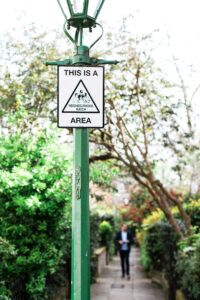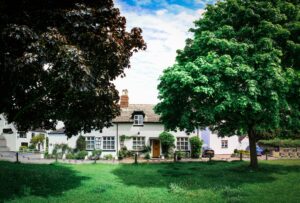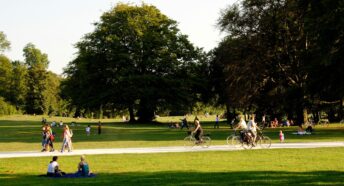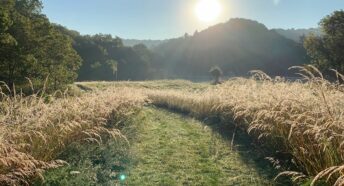Stop and smell the flowers…
Stop and smell the solar panels doesn’t quite have the same feel, does it?
What do we do with yet more threat of solar farms on Buck’s farmland. The Rosefield Solar Farm proposal is just one of many solar factory proposals, this particular example being the size of 617 football pitches.  So what are the worries with a solar farm of this size? A site like this sadly doesn’t just bring the panels themselves, the issue surrounds all the extras. Increased traffic, 9.3 miles of security fencing, lighting & CCTV and another blow to local wildlife. Although we of course support the exploration of green and renewable energy sources, vast developments like this are simply not the answer. The ‘farm’ is to be located on 2,100 acres of agricultural land on the Claydon Estate. This land is currently farmed by 3 tenant farmers
So what are the worries with a solar farm of this size? A site like this sadly doesn’t just bring the panels themselves, the issue surrounds all the extras. Increased traffic, 9.3 miles of security fencing, lighting & CCTV and another blow to local wildlife. Although we of course support the exploration of green and renewable energy sources, vast developments like this are simply not the answer. The ‘farm’ is to be located on 2,100 acres of agricultural land on the Claydon Estate. This land is currently farmed by 3 tenant farmers who are understandably fearful of the future of their livelihoods as most, if not all would be lost if this proposal goes ahead. With 10 surrounding villages to be affected there is sure to be further threat to local jobs linked with these farms. Local MP Greg Smith has spoken out, opposing the development saying “there is no case for ground based solar” and “it is totally wrong to take this volume of land from food production”.
who are understandably fearful of the future of their livelihoods as most, if not all would be lost if this proposal goes ahead. With 10 surrounding villages to be affected there is sure to be further threat to local jobs linked with these farms. Local MP Greg Smith has spoken out, opposing the development saying “there is no case for ground based solar” and “it is totally wrong to take this volume of land from food production”.
 To stop and smell the roses means intentionally slowing down, lifting your eyes, and paying attention. We need developers to do just that. We need there to be more attention paid to the damage these quick fix sites bring. Achieving national solar targets is still obtainable through rooftop solar policies for houses/commercial buildings. Alongside harnessing already damaged brownfield sites and utilising further disregarded spaces with fewer alternative uses. Just like many other countries do. Local ancient woodlands, nature reserves and watercourses running through and adjoining the proposed development will all be catastrophically affected and very unlikely to ever recover. We support the local groups in their opposition. Here at CPRE Bucks we have submitted comments at the early stages of the developers consultation, as the proposal hasn’t yet reached the point of an actual planning application/ public inquiry. We will be keeping a close eye as things unfold, if the proposal goes ahead in its current form we plan to submit a more formal objection against the development. Visit https://claydonssolaractiongroup.co.uk/ for more details on how you can support this objection.
To stop and smell the roses means intentionally slowing down, lifting your eyes, and paying attention. We need developers to do just that. We need there to be more attention paid to the damage these quick fix sites bring. Achieving national solar targets is still obtainable through rooftop solar policies for houses/commercial buildings. Alongside harnessing already damaged brownfield sites and utilising further disregarded spaces with fewer alternative uses. Just like many other countries do. Local ancient woodlands, nature reserves and watercourses running through and adjoining the proposed development will all be catastrophically affected and very unlikely to ever recover. We support the local groups in their opposition. Here at CPRE Bucks we have submitted comments at the early stages of the developers consultation, as the proposal hasn’t yet reached the point of an actual planning application/ public inquiry. We will be keeping a close eye as things unfold, if the proposal goes ahead in its current form we plan to submit a more formal objection against the development. Visit https://claydonssolaractiongroup.co.uk/ for more details on how you can support this objection.

Of course this is just one area of Buckinghamshire we are keeping an eye on, and we need more residents to join us in this wider perspective… a ‘County watch, rather than Neighbourhood watch’ approach.
CPRE is a nationwide charity and here at CPRE Bucks we care for Buckinghamshire as a whole. We want to encourage residents to shift their focus from solely just what’s going on at your door step, after all it’s the bigger picture that counts. We are stronger working together.
All of us working together to counteract developments that damage precious green spaces in our county. It’s important to remember that our actions impact not just our immediate surroundings, but the broader environment of our county as well. While it’s natural to prioritise the green spaces closest to us, it’s equally important to recognise the interconnectedness of all the green areas within our county.
Who says you’ll be living in that neighbourhood forever? By extending our care and attention beyond our own village green, we ensure that everyone, including future generations regardless of their location within the county, can enjoy the benefits of well-maintained and preserved green spaces. After all, the beauty and tranquility of nature is meant to be shared and appreciated by all who call Buckinghamshire home. Lets remove the tunnel vision.
Protecting green spaces at the county level rather than just in one’s own neighborhood is important for several reasons:
Ecosystem Services: Green spaces provide essential ecosystem services such as air and water purification, carbon sequestration, and habitat for wildlife. These services benefit not only the local area but also adjacent neighborhoods and communities within the county.
Biodiversity Conservation: Many green spaces host a diverse range of plant and animal species. By protecting larger areas at the county level, we can better preserve biodiversity and ensure the survival of various species that may have specific habitat requirements or migration patterns.
Recreation and Well-being: Green spaces offer opportunities for recreation, exercise, and relaxation. Access to larger green areas across Buckinghamshire can benefit a wider population, providing more options for outdoor activities and improving the overall well-being of residents. Having more choice in parks to enjoy stops overcrowding.
Climate Change Mitigation: Green spaces play a crucial role in mitigating climate change by absorbing carbon dioxide and reducing the urban heat effect. Protecting larger areas of greenery within the county can contribute to local climate resilience and help combat the impacts of climate change. Protecting just one small area in our local village alone will not be enough. The bigger picture counts.
Aesthetic and Cultural Value: Buckinghamshire is notable for its open countryside and natural features which contribute to the aesthetic beauty of Buckinghamshire and healthy property prices.

Preserving larger green areas within the county helps maintain these aesthetic and cultural values for the enjoyment of current and future generations. The value of green spaces in Buckinghamshire is deeply intertwined with its history, architecture, community life, conservation efforts and last but not least tourism. These spaces are a cherished asset within our cultural landscape.
Water Management: Green spaces, such as wetlands and forests, play a vital role in regulating water cycles, preventing flooding, and maintaining water quality. Protecting green spaces at the county level can ensure better management of water resources for the benefit of all residents. While most of us travel across county for work, flooding will affect multiple communities.
Connectivity and Wildlife Corridors: Larger green spaces facilitate wildlife corridors and maintain connectivity between different habitats. This is crucial for the movement of wildlife populations and helps prevent fragmentation of ecosystems, which can lead to loss of biodiversity.
In summary, looking after the whole of Bucks when it comes to protecting green spaces is essential. How can you help? Signing petitions for land protection not only on your doorstep and follow and promote our countywide campaigns.








